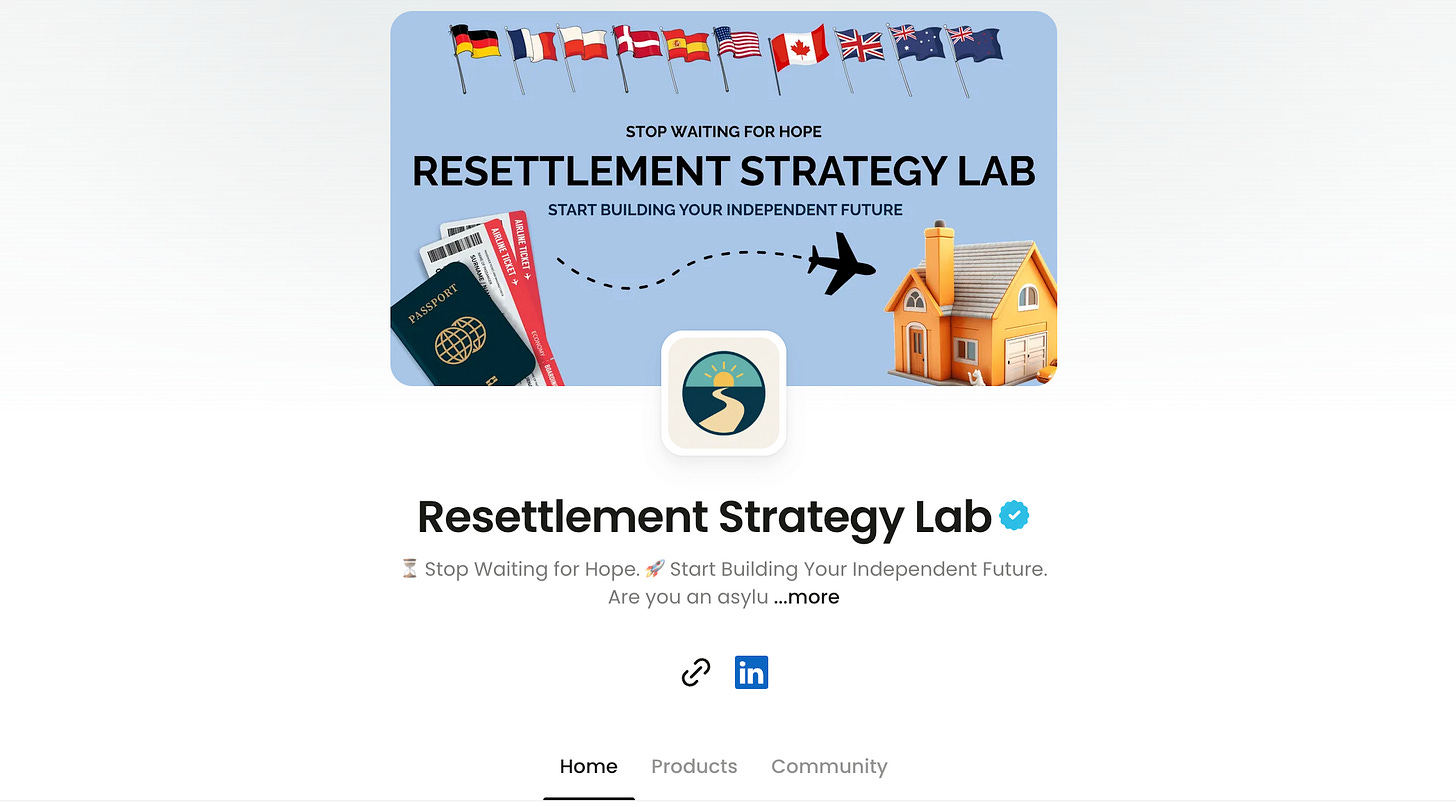Stuck in legal limbo? Join our Exit to Hope Community 🌍 for a proven roadmap, live guidance & community support.
Don’t forget to hit subscribe in the below for a FREE BONUS PDF packed with tips to kickstart your path toward belonging and a brighter future!
This happens everyday.
You wake up and the first thought is: “Still here. Still waiting.”
Nothing has changed. Your case is pending. Your credentials aren’t recognized. Your family is still somewhere else. The job you’re qualified for doesn’t exist in this new place.
You’re told to be patient. To trust the process. To stay hopeful.
But patience feels like drowning in slow motion.
THE REALITY
Waiting isn’t passive. Waiting is active torture for your nervous system.
Every day in limbo, your brain asks: “Am I safe? Do I have a future? Does my past matter anymore?” And every day, the answer is: “We don’t know yet. Keep waiting.”
Humans aren’t designed for prolonged uncertainty. We’re designed to solve problems, take action, move toward goals. Waiting removes all of that.
So your body compensates. Anxiety spikes because your nervous system is trying to prepare for every possible outcome. Motivation crashes because there’s no clear next step to take. Time distorts—days blur together because nothing distinguishes one from the next.
This isn’t weakness. This is your system trying to survive a situation it wasn’t built for.
The weight isn’t just psychological. Waiting blocks everything: you can’t plan, can’t commit, can’t build, because you don’t know what happens next or when.
THE SHIFT
But here’s what’s also true: you can’t control the decision timeline, but you can control your daily operating system.
Waiting doesn’t have to be empty. It can be preparation.
Not the toxic positivity version—”just be grateful, just stay busy.” The realistic version: while you’re waiting for others to decide your legal status, you can decide your daily mental status.
You can’t make the waiting stop. But you can stop letting waiting be your entire life.
THE TOOL
Here’s a practice called The Two-Timer Strategy—and it works because it separates “time I control” from “time I’m waiting through.”
How it works:
Every morning, divide your day into two timers:
Timer 1: Waiting Time (30 minutes max) This is when you check your case status, read the news about policy changes, follow up on pending applications, or contact the agencies handling your situation.
Set a literal timer. When it goes off, that time is done for the day.
This isn’t avoidance—it’s containment. You’re giving the waiting its space, but not letting it colonize your entire day.
Timer 2: Building Time (minimum 1 hour) This is time you dedicate to something you can control completely. Something that moves forward regardless of what’s happening with your case.
Examples:
Learning a new skill (language, software, trade)
Physical practice (walking, stretching, strength)
Creating something (writing, art, cooking, fixing something)
Connecting with one person meaningfully
The only rule: it has to be something that produces a result you can see. Not “thinking about the future”—doing something concrete that exists after the hour ends.
Why this works:
Your brain needs evidence that time is passing productively. When every day is just waiting, there’s no psychological proof you’re moving forward.
The building time creates that proof. After a week, you’ve walked 5 times. You’ve learned 50 new words. You’ve written 7 pages. You’ve fixed 3 things.
Your legal status didn’t change. But you did.
That distinction—between what they control and what you control—is how you stop drowning.
TODAY’S TAKE AWAY
Waiting will end. You don’t know when, but it will.
The question isn’t whether you can survive it. You already are.
The question is: when the waiting ends, who will you be? Someone who lost months to limbo, or someone who used the wait to build the foundation for what comes next?
You get to decide that today.
If you're ready to explore resettlement pathways and need strategic guidance, I'm here. But don't wait—time is not your friend right now.
The Voice Behind the Writing
I focus on creating pathways that make it easier for people to move forward in a new setting. My goal is to raise a community of newcomers who are strong, informed, and prepared for their next steps.
I begin by entering their lives, listening, and building trust. I walk with them through trauma, helping them heal and find strength again. As stability grows, I guide them toward safe transition options and prepare them for what lies ahead.
Community integration is not the starting point. It is the final step of a long and difficult journey. Along the way, I make information clear and open so newcomers know their choices, and so the public knows how to act with them.
Share this to someone you know who needs this information.



